Costa Rica
Discover Costa Rica
Costa Rica, a breathtaking country in Central America, is known for its lush rainforests, stunning beaches, and diverse wildlife. It is a land of rich biodiversity and a paradise for nature enthusiasts.

With a vibrant culture, warm hospitality, and a strong emphasis on sustainability, Costa Rica offers a unique experience for travelers seeking adventure, relaxation, and ecological exploration.
Geography and Map
Costa Rica, located in Central America, is bordered by Nicaragua to the north, Panama to the southeast, the Pacific Ocean to the west, and the Caribbean Sea to the east. The geography of Costa Rica is diverse, featuring stunning coastlines, lush rainforests, and impressive mountain ranges. The country is known for its rich biodiversity, with a wide variety of ecosystems, including tropical rainforests, cloud forests, and mangrove swamps.

The map of Costa Rica showcases its unique geography, with the Pacific coastline on the west and the Caribbean coast on the east. Inland, you can find a mix of dense jungles, towering volcanoes, and picturesque rivers. The diverse geography makes Costa Rica a popular destination for eco-tourism and outdoor enthusiasts.
Flag and National Symbols
Flag of Costa Rica
The flag of Costa Rica is composed of five horizontal stripes, with blue at the top and bottom, white in the center, and red next to the white. The flag is a symbol of the country’s commitment to peace, and each color represents different meanings.
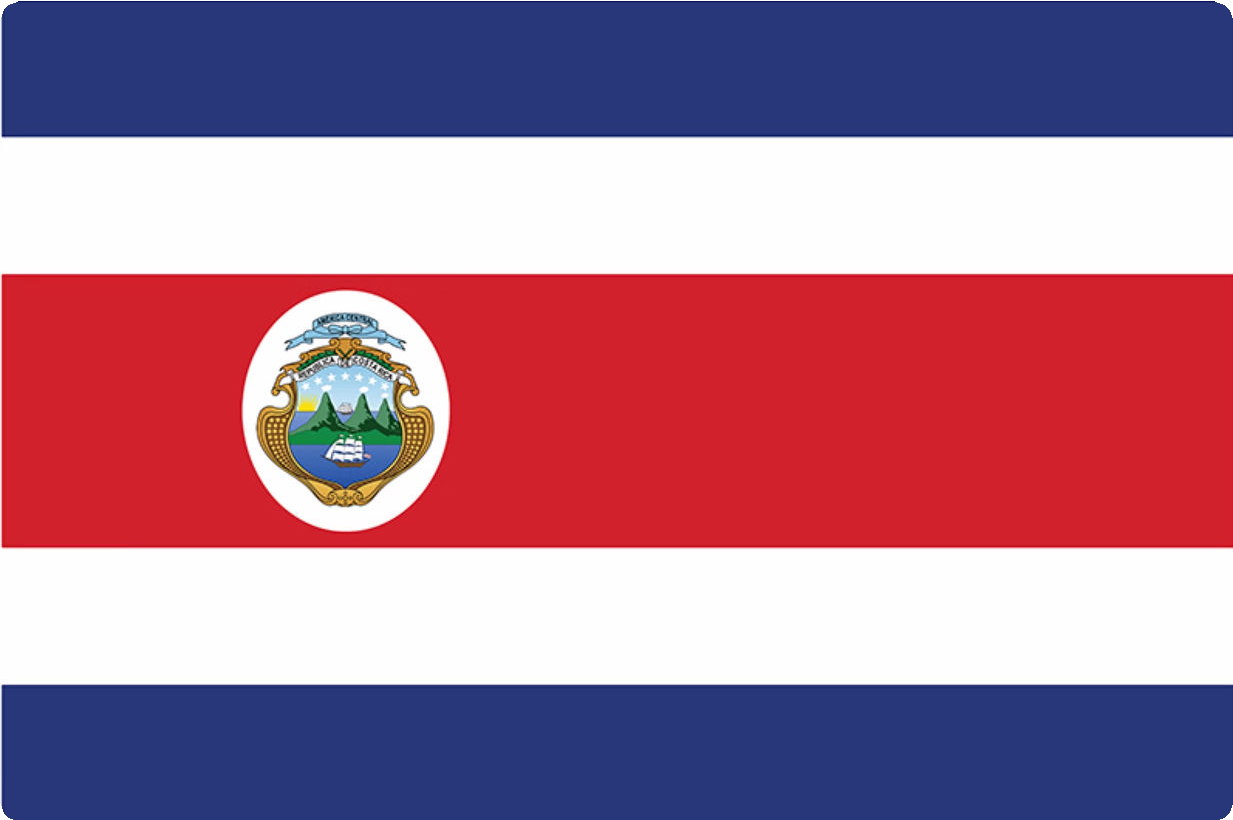
National Emblem
The national emblem of Costa Rica features a coat of arms surrounded by coffee branches and blue ribbon. The coat of arms depicts three volcanoes and the Caribbean and Pacific oceans. It also includes seven stars representing the seven provinces of Costa Rica.
National Currency
The national currency of Costa Rica is the colón. It is named after Christopher Columbus and is represented by the symbol “₡”. The colón comes in coins and banknotes, each featuring notable figures and symbols of Costa Rica’s history and culture.
Currency and Economy
Currency
Costa Rica’s official currency is the Costa Rican Colón. The currency is named after Christopher Columbus, known as “Cristóbal Colón” in Spanish. Banknotes and coins depict prominent figures, indigenous animals, and important historical landmarks, adding a touch of cultural significance to everyday transactions.
Economy
Costa Rica has a diverse economy, with agriculture, tourism, and technology sectors playing major roles. The country’s commitment to sustainability and renewable energy has attracted ecotourists and environmentally conscious businesses. Additionally, the government has invested in education, healthcare, and infrastructure, contributing to the overall stability and growth of the economy.
Climate and Weather
Varied Climate
Costa Rica boasts several microclimates due to its diverse topography and geographical features. The country experiences a tropical climate near the coasts, while the central region has a cooler mountain climate. The Caribbean coast typically has a more humid climate compared to the drier Pacific coast. The highlands enjoy a comfortable, temperate climate, making Costa Rica a year-round destination with diverse weather experiences.
Rainy Season
Costa Rica has a distinct rainy season, locally known as “invierno,” which typically runs from May to November. During this period, lush green landscapes emerge, and numerous waterfalls gush with fresh rainwater. While rain showers may occur, they often pass quickly, leaving behind clear, sunny skies and refreshingly clean air.
Dry Season
The dry season, or “verano,” spans from December to April and is characterized by sunny days and little to no rain. It is an ideal time for beach vacations and outdoor activities. The Pacific side of the country tends to be warmer and drier during this season, perfect for sunbathing and water sports, while the central valley and Caribbean coast offer pleasant temperatures for exploration and adventure.
Culture and Traditions
Costa Rica is known for its rich and diverse culture, influenced by both indigenous traditions and Spanish heritage. The country boasts a vibrant arts scene, with traditional music, dance, and colorful festivals playing a significant role in everyday life. The Costa Rican culture is centered around family, community, and a deep connection to nature. The warmth and friendliness of the people are reflected in their customs, hospitality, and strong sense of national identity.
One of the most iconic cultural events in Costa Rica is the celebration of “Dia de la Raza” (Columbus Day), which showcases traditional dances, music, and mouth-watering local cuisine. The festivities are a colorful display of costumes and folklore, inviting locals and visitors to immerse themselves in the rich culture and traditions of the country.
The Tico lifestyle, as the locals are known, is deeply rooted in traditions such as the “Pura Vida” philosophy, which embodies a relaxed, easy-going approach to life. This spirit is reflected in the vibrant arts and crafts, diverse culinary experiences, and the warmth of the Costa Rican people.
Traditional Costa Rican Dance
Colorful Costumes and Rhythmic Movements
Traditional Costa Rican dance is characterized by vibrant, elaborate costumes that reflect the country’s rich cultural heritage. Dancers often wear intricately designed, colorful dresses and outfits adorned with traditional patterns. The movements are rhythmic and energetic, reflecting the passion and liveliness of the Costa Rican people.
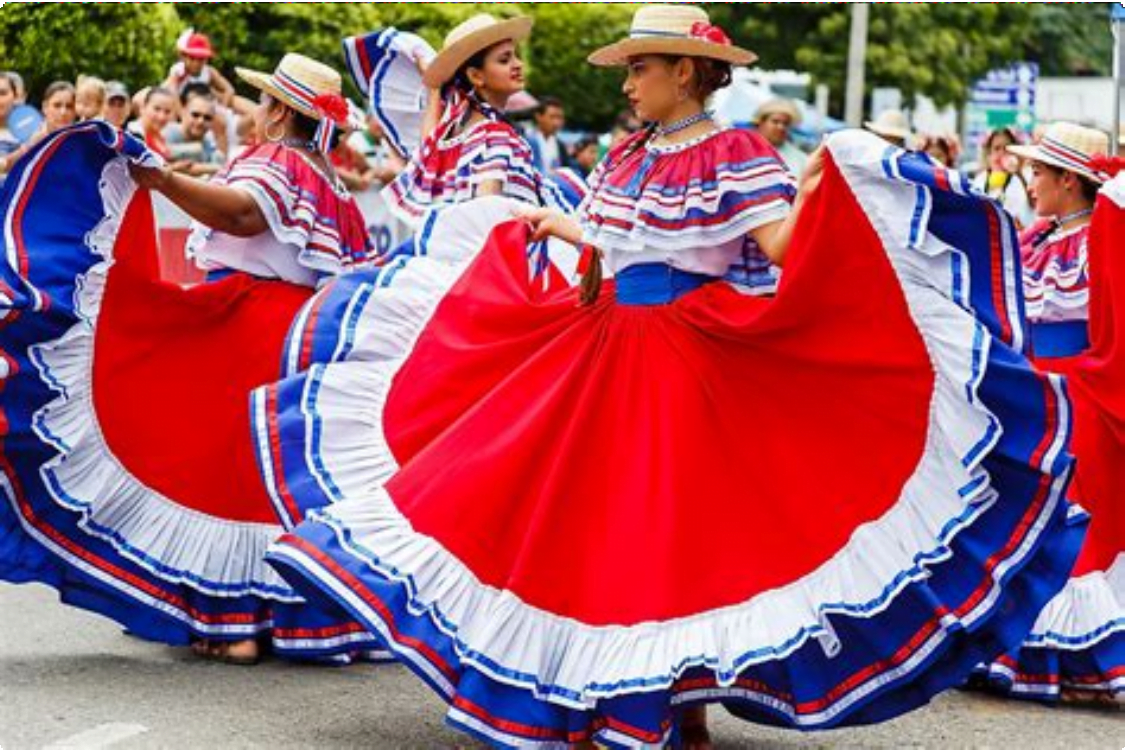
Influences from Afro-Caribbean and Indigenous Cultures
The dance styles in Costa Rica have been influenced by the diverse cultural background of the country, including Afro-Caribbean and Indigenous traditions. These influences have contributed to the unique and dynamic nature of traditional Costa Rican dance, making it a captivating fusion of different cultural elements.

Celebration of Community and Festive Spirit
Traditional Costa Rican dance is often performed during local festivals and community celebrations, serving as a symbol of unity and shared heritage. The dance performances are accompanied by lively music and enthusiastic participation, creating a joyful and festive atmosphere that brings people together.

Popular Costa Rican Foods
Gallo Pinto
Gallo Pinto is a traditional Costa Rican dish made with rice and beans, often served as a breakfast food. It is seasoned with onions, sweet peppers, and cilantro, giving it a flavorful kick.

Casado
Casado is a classic lunch dish in Costa Rica, consisting of rice, black beans, plantains, salad, and a choice of meat such as chicken, fish, or beef. It’s a hearty and satisfying meal that showcases the diverse flavors of Costa Rican cuisine.

Olla de Carne
Olla de Carne is a savory beef stew featuring chunks of tender meat, cassava, corn, sweet potatoes, and a variety of vegetables. It’s a comforting and filling dish that is often enjoyed during family gatherings and special occasions.

Ceviche
Ceviche is a popular seafood dish in Costa Rica, typically made with fresh raw fish marinated in lime juice, onions, cilantro, and bell peppers. The zesty flavors and vibrant colors make it a refreshing and delightful culinary experience.

Famous Costa Rican Coffee
Coffee production is a significant part of Costa Rica’s economy, with the country being renowned for its high-quality beans and sustainable farming practices. The fertile volcanic soil and ideal climate create the perfect conditions for cultivating Arabica coffee, known for its exceptional flavor profile.
The coffee cultivation process in Costa Rica is marked by attention to detail, from hand-picking the ripe coffee cherries to the meticulous wet processing method. This results in a smooth, rich, and well- balanced cup of coffee that has gained recognition worldwide.
The country’s coffee plantations, nestled amidst lush greenery and breathtaking landscapes, offer a unique and immersive experience for visitors interested in exploring the journey from bean to brew. The aroma of freshly roasted coffee beans fills the air, inviting travelers to savor a freshly brewed cup while taking in the stunning surroundings.
National Parks and Reserves
Arenal Volcano National Park
Arenal Volcano National Park is home to the Arenal Volcano, one of the most active and famous volcanoes in Costa Rica. The park offers a variety of hiking trails that allow visitors to explore the diverse flora and fauna, including the opportunity to see the fascinating volcanic landscapes and hot springs.

Manuel Antonio National Park
Manuel Antonio National Park is renowned for its stunning white sand beaches, lush rainforests, and diverse wildlife. Visitors can enjoy activities such as hiking, bird watching, and observing the playful capuchin monkeys, sloths, and rare squirrel monkeys that inhabit the park.

Corcovado National Park
Corcovado National Park is a pristine natural wonder, characterized by its untouched rainforests, stunning beaches, and abundant wildlife. It is home to all four of Costa Rica’s monkey species, as well as the endangered Baird’s tapir and the majestic scarlet macaw.
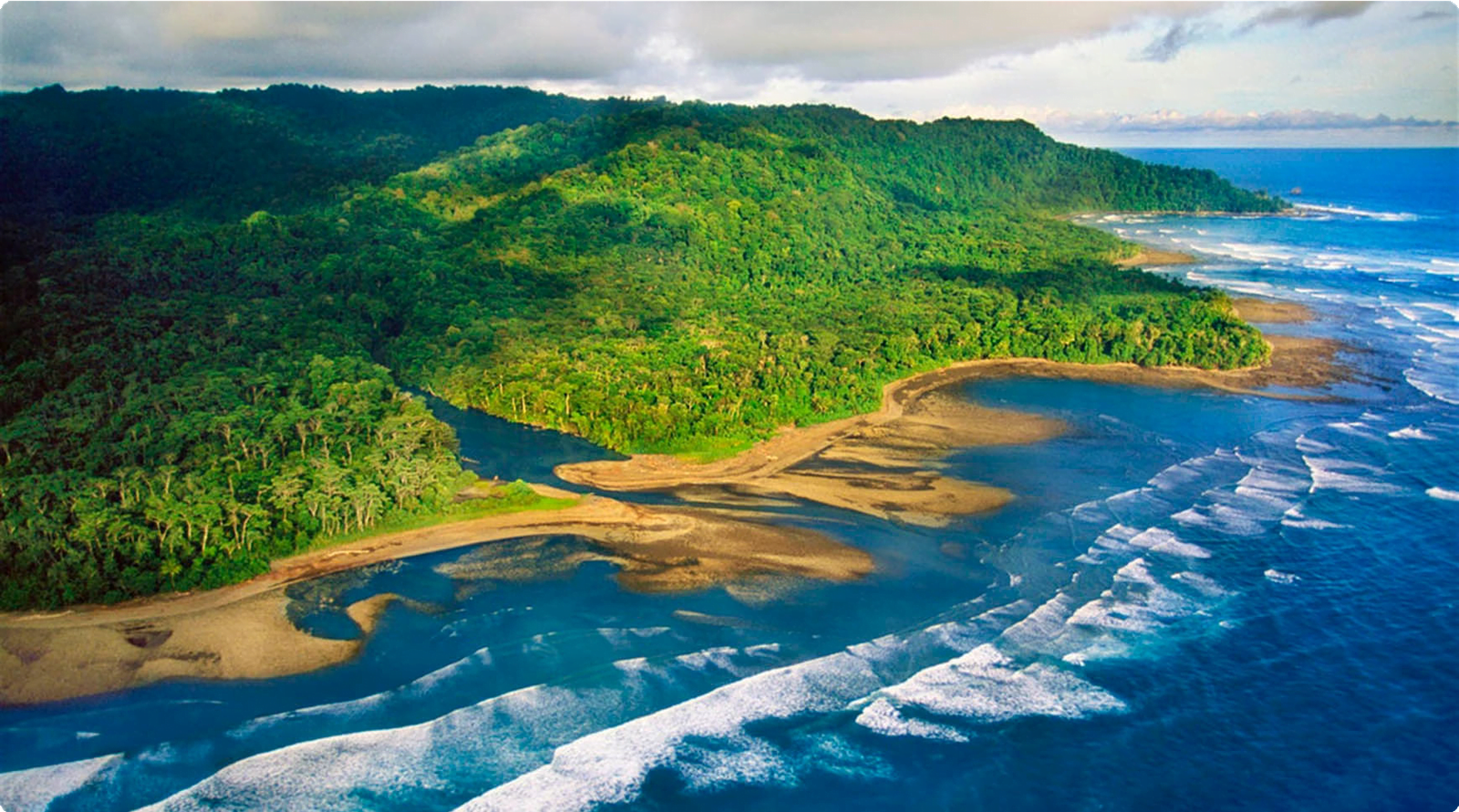
Best Beaches in Costa Rica
Manuel Antonio Beach
Manuel Antonio Beach is renowned for its pristine white sands, clear turquoise waters, and lush greenery surrounding the shore. It is part of the Manuel Antonio National Park, offering visitors the opportunity to immerse themselves in the beauty of both the beach and the tropical rainforest.
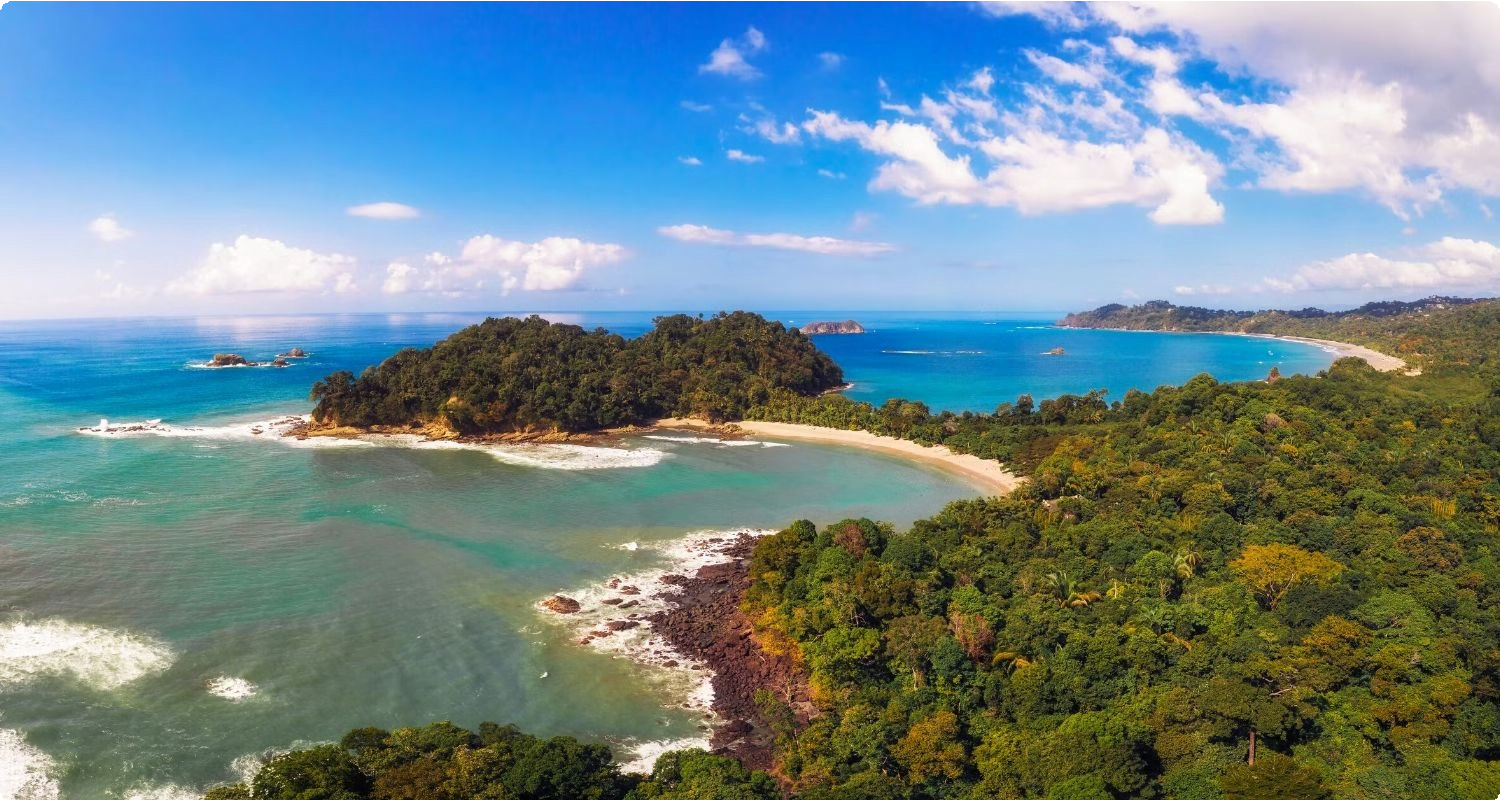
Tamarindo Beach
Tamarindo Beach is a popular destination for surfers and beach enthusiasts. The long stretch of golden sand, warm Pacific waters, and vibrant beach town atmosphere make it an ideal spot for both relaxation and water sports.

Playa Conchal
Playa Conchal is known for its unique seashell-studded shore, creating a picturesque and exotic setting for beachgoers. The crystal-clear waters and gentle waves offer a perfect setting for snorkeling and swimming amidst the stunning marine life.
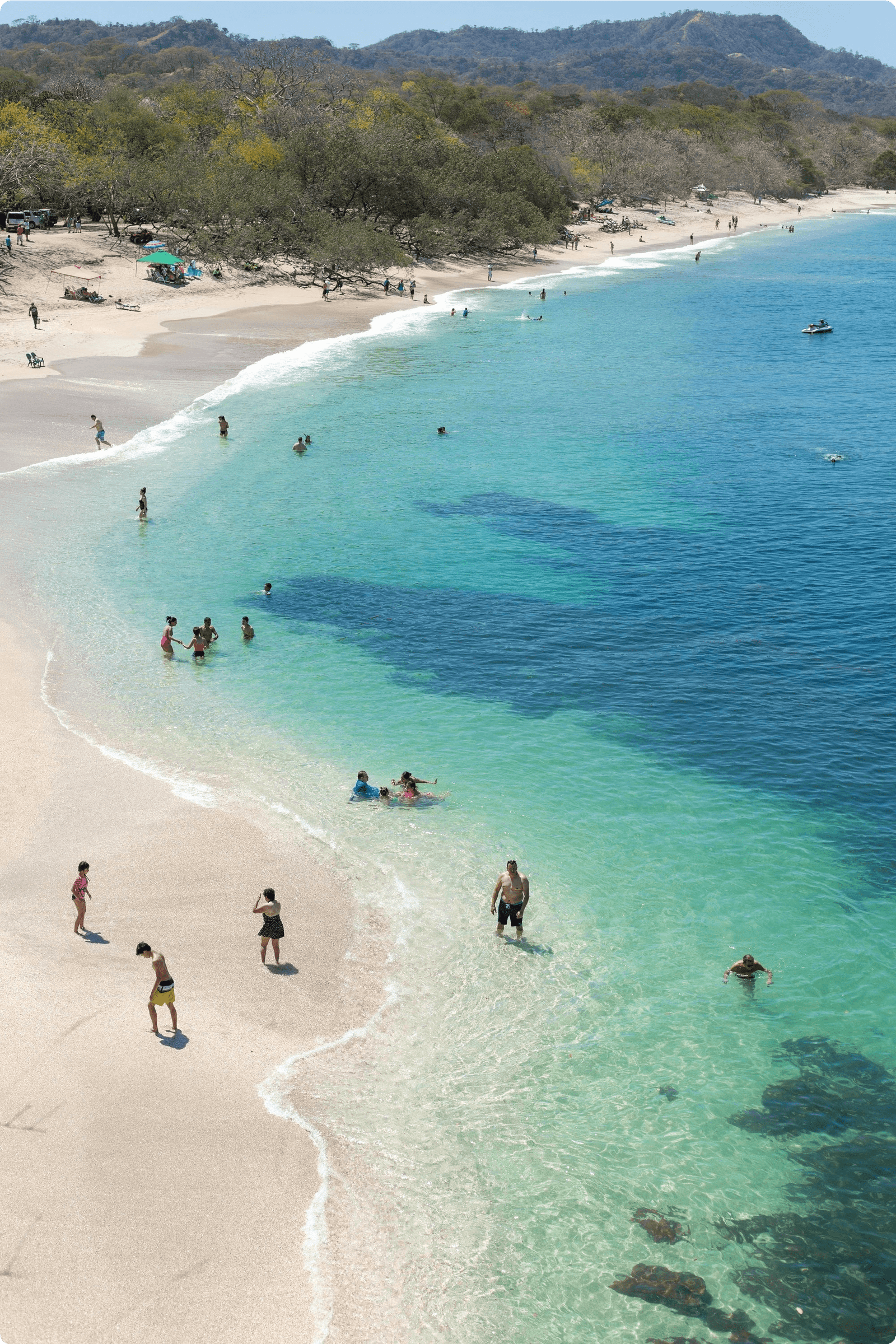
Costa Rica boasts an array of stunning beaches, each with its own distinct charm and natural beauty. Whether you’re seeking adventure, relaxation, or simply a breathtaking coastal experience, the country’s diverse beaches offer something for every type of traveler.
Top Tourist Attractions
Arenal Volcano
Arenal Volcano is a must-see natural wonder in Costa Rica. Visitors can enjoy stunning views of the volcano and its lush surroundings. The area offers hot springs, hiking trails, and the chance to witness the volcano’s occasional eruptions.
Monteverde Cloud Forest Reserve
The Monteverde Cloud Forest Reserve is a biodiversity hotspot, known for its rich flora, fauna, and unique cloud forest ecosystem. Visitors can explore the reserve’s hanging bridges, zip lines, and nature trails for an unforgettable experience.
Manuel Antonio National Park
This national park is famous for its beautiful beaches, lush rainforest, and abundant wildlife. Visitors can enjoy activities such as hiking, wildlife spotting, and relaxing on pristine, white-sand beaches.
Tortuguero National Park
Tortuguero is a paradise for nature lovers, with its network of canals, dense rainforest, and diverse wildlife, including turtles, monkeys, and birds. Boat tours offer an up-close look at the park’s natural beauty.
Adventure Activities in Costa Rica
- Hiking in the Cloud Forests: Costa Rica is home to some of the most breathtaking cloud forests in the world, offering hiking trails that lead to stunning waterfalls and diverse wildlife encounters.
- Surfing on the Pacific Coast: The Pacific coast of Costa Rica provides world-class surfing opportunities, with breaks suitable for both beginners and experienced surfers.
- Ziplining through the Rainforest: Experience the thrill of ziplining through the lush rainforest canopy, getting a bird’s eye view of the incredible biodiversity below.
- Whitewater Rafting in the Jungle Rivers: Adrenaline junkies can tackle the challenging rapids of Costa Rica’s jungle rivers, offering an exhilarating and memorable experience.
Wildlife and Biodiversity
Red-Eyed Tree Frog
The iconic red-eyed tree frog is one of the most recognizable symbols of Costa Rica’s rich biodiversity. This small, vibrant amphibian with its bright colors and striking red eyes can be spotted in the rainforests, making it a popular sighting for wildlife enthusiasts and photographers.

Scarlet Macaw
The scarlet macaw, with its spectacular red, blue, and yellow plumage, is a majestic bird species native to Costa Rica. It inhabits the tropical lowland rainforests and is known for its loud, distinctive calls that echo through the trees, adding to the vibrant tapestry of Costa Rica’s natural soundscape.

Humpback Whale
Costa Rica’s coastal waters are home to the magnificent humpback whale, which migrates to the region to breed and calve. Witnessing these gentle giants breach and play in the Pacific Ocean is a breathtaking experience, offering a glimpse into the incredible marine biodiversity of Costa Rica.

Costa Rican History
Costa Rica’s history is rich and diverse, shaped by pre-Columbian indigenous cultures, Spanish colonialism, and a legacy of democracy and peace. The country was originally inhabited by indigenous tribes such as the Chorotegas, Huetar, and Bribri, who left behind intricate stone spheres and other archaeological treasures.
Upon the arrival of the Spanish in the 16th century, Costa Rica became a part of the Viceroyalty of New Spain. However, the region’s remote and rugged terrain made it less economically significant than other Spanish colonies, leading to a lack of significant mineral wealth and a more independent-minded population.
This spirit of independence led to Costa Rica becoming one of the first countries in the world to abolish its army, and it has also been a leader in environmental protection and human development. The country’s commitment to peace and sustainability is deeply rooted in its history, making it a truly unique nation in the region.
Famous Costa Ricans
Claudia Poll
Claudia Poll is one of the most celebrated Costa Rican athletes, known for her exceptional achievements in swimming. She won an Olympic gold medal in the 200m freestyle at the 1996 Atlanta Olympics, becoming the first and only Costa Rican to win an Olympic gold in any sport. Poll’s remarkable success and dedication have made her a national hero and an inspiration to aspiring athletes in Costa Rica.

Oscar Arias
Oscar Arias, a prominent Costa Rican politician, served as the President of Costa Rica and was awarded the Nobel Peace Prize in 1987 for his efforts to bring stability and peace to Central America. Arias played a significant role in negotiating the end of the civil wars in several Central American countries, demonstrating exceptional diplomatic skill and leadership on the international stage.

Frida Zeledón
Frida Zeledón was a pioneering feminist and human rights activist in Costa Rica. She played a vital role in advocating for women’s rights, gender equality, and social justice. Zeledón’s legacy continues to inspire and empower women in Costa Rica and beyond, as her contributions have had a lasting impact on the advancement of gender equality and human rights.

Education System
Educational Structure
In Costa Rica, the education system is divided into three cycles: pre-school education, primary education, and secondary education. Pre-school education is not mandatory, but it serves as an
important foundation for young learners. Primary education, which is mandatory, covers students from first to sixth grade, while secondary education spans from seventh to eleventh grade. At the secondary level, students can choose between a general academic program or various technical programs.
Innovative Approaches
The Costa Rican education system emphasizes innovative teaching methods and critical thinking, encouraging students to actively engage in their learning process. Project-based learning, inquiry-based instruction, and hands-on activities are integrated into the curriculum. The focus on holistic development, creativity, and problem-solving skills prepares students for the challenges of the modern world.
Educational Achievements
Costa Rica boasts high literacy rates and a strong commitment to providing universal access to education. The country has made significant strides in promoting gender equality in education, with girls having equal opportunities for academic advancement. Additionally, efforts are underway to enhance technical and vocational education, aligning it with emerging industry needs.
Healthcare System
Public Healthcare
Costa Rica is renowned for its public healthcare system, which is considered one of the best in Latin America. The system is accessible to both citizens and legal residents, offering comprehensive coverage, including doctor visits, hospital stays, prescription medications, and more. The country has a network of public hospitals and clinics that provide high-quality care to patients, and the cost is significantly lower compared to private healthcare services.
Private Healthcare
Alongside the public system, Costa Rica also boasts a robust private healthcare sector. Private hospitals and clinics are available throughout the country, providing top-notch medical services for both locals and medical tourists. Many private facilities are renowned for their advanced technology, skilled medical professionals, and personalized care, attracting patients from around the world seeking high-quality treatments and procedures.
Transportation in Costa Rica
Public Transportation
Costa Rica offers an extensive public transportation system, especially in major cities like San Jose. Buses are the most common mode of transportation and provide an affordable and convenient way to get around the country.
Car Rentals
For greater flexibility and independence, visitors can opt for car rentals. This allows exploration of the diverse landscapes and remote areas of Costa Rica at their own pace.
Rail Travel
Although not as extensive as in other countries, Costa Rica has a scenic railway system offering a charming way to see the countryside.
Safety and Security
Police Presence: Costa Rica is known for its relatively high police presence, particularly in tourist areas, which helps to maintain safety and security.
Low Crime Rate: The country boasts a low crime rate compared to its neighbors, making it a favored destination for travelers seeking a safe environment.
Natural Disaster Preparedness: With its susceptibility to natural disasters, such as earthquakes and hurricanes, Costa Rica has developed strong preparedness and response systems to ensure the safety of its residents and visitors.
Best Cities to Visit in Costa Rica
San Jose: The capital city of Costa Rica, San Jose is a bustling metropolis with a rich cultural heritage. Explore the historic downtown, visit the National Theater, and experience the vibrant art scene.
La Fortuna: Located near the Arenal Volcano, La Fortuna is a paradise for nature lovers and adventure enthusiasts. Enjoy hot springs, zip-lining, and hiking while surrounded by breathtaking natural beauty.
Manuel Antonio: This coastal gem is famous for its stunning beaches, lush rainforests, and abundant wildlife. It’s a perfect destination for beach relaxation and wildlife exploration.
Tamarindo: Known for its gorgeous sunsets and lively surf culture, Tamarindo offers an amazing blend of relaxation, water sports, and vibrant nightlife. It’s a top destination for beach lovers and water sports enthusiasts.
Top Places to Travel in Costa Rica
Manuel Antonio National Park
Located on the Pacific Coast, this park is renowned for its stunning beaches, lush rainforests, and diverse wildlife. Visitors can hike along scenic trails, spot monkeys and sloths, and relax on picturesque sandy shores.
Arenal Volcano
This iconic volcano is a must-visit destination for nature enthusiasts. It offers hot springs, waterfalls, and adventure activities like zip-lining and horseback riding, all set against the backdrop of the majestic volcano.
Monteverde Cloud Forest Reserve
Explore the mystical beauty of the cloud forest with its enchanting canopy walks and rich biodiversity. Birdwatchers will delight in the opportunity to spot rare and colorful avian species in this unique ecosystem.
Tortuguero National Park
Known as the ‘Amazon of Costa Rica’, this park is a paradise for wildlife lovers. Boat tours offer a chance to see nesting sea turtles, vibrant birdlife, and fascinating aquatic species in the park’s network of canals and lagoons.
Accommodation Options
Luxury Resorts
Costa Rica offers a plethora of luxury resorts that cater to the discerning traveler. From stunning beachfront properties to lush jungle retreats, these resorts provide top-notch amenities, world-class service, and breathtaking views. Many of them feature spa facilities, fine dining restaurants, and exclusive access to pristine beaches and rainforests.
Eco-Friendly Lodges
For those seeking a more sustainable and immersive experience, eco-friendly lodges are the perfect choice. Nestled within the heart of nature, these lodges offer a unique blend of comfort and environmental consciousness. Guests can participate in eco-friendly activities, learn about conservation efforts, and truly connect with the natural beauty of Costa Rica.
Boutique Hotels
Costa Rica boasts an array of charming boutique hotels that capture the essence of the country. These intimate accommodations are often nestled in quaint towns or surrounded by lush tropical gardens. They offer personalized service, local cultural experiences, and a sense of authentic charm that appeals to travelers looking for a unique and intimate stay.
Conclusion and Recommendations
After exploring the diverse and vibrant culture, breathtaking natural landscapes, and rich biodiversity of Costa Rica, it’s clear that this beautiful country offers an unforgettable experience for travelers. With its stunning beaches, lush rainforests, and welcoming people, Costa Rica is a must-visit destination for adventurers, nature enthusiasts, and anyone seeking a taste of “pura vida.”
For those planning a trip to Costa Rica, it’s recommended to take the time to explore the hidden gems of the country, away from the conventional tourist spots. Engaging with local communities and discovering the lesser-known attractions can provide a more authentic and enriching experience.
Additionally, considering the environmental conservation efforts in Costa Rica, ecotourism and responsible travel practices are highly encouraged. Travelers should aim to minimize their environmental impact and support sustainable tourism initiatives during their visit to this ecologically rich country.
As you plan your Costa Rican adventure, take the time to savor the local cuisine, immerse yourself in the vibrant culture, and embrace the warmth and hospitality of the Costa Rican people. Whether you seek adrenaline-pumping activities, serene natural settings, or cultural immersion, Costa Rica offers something for everyone.